MAURICE DE VLAMINCK (1876-1958)
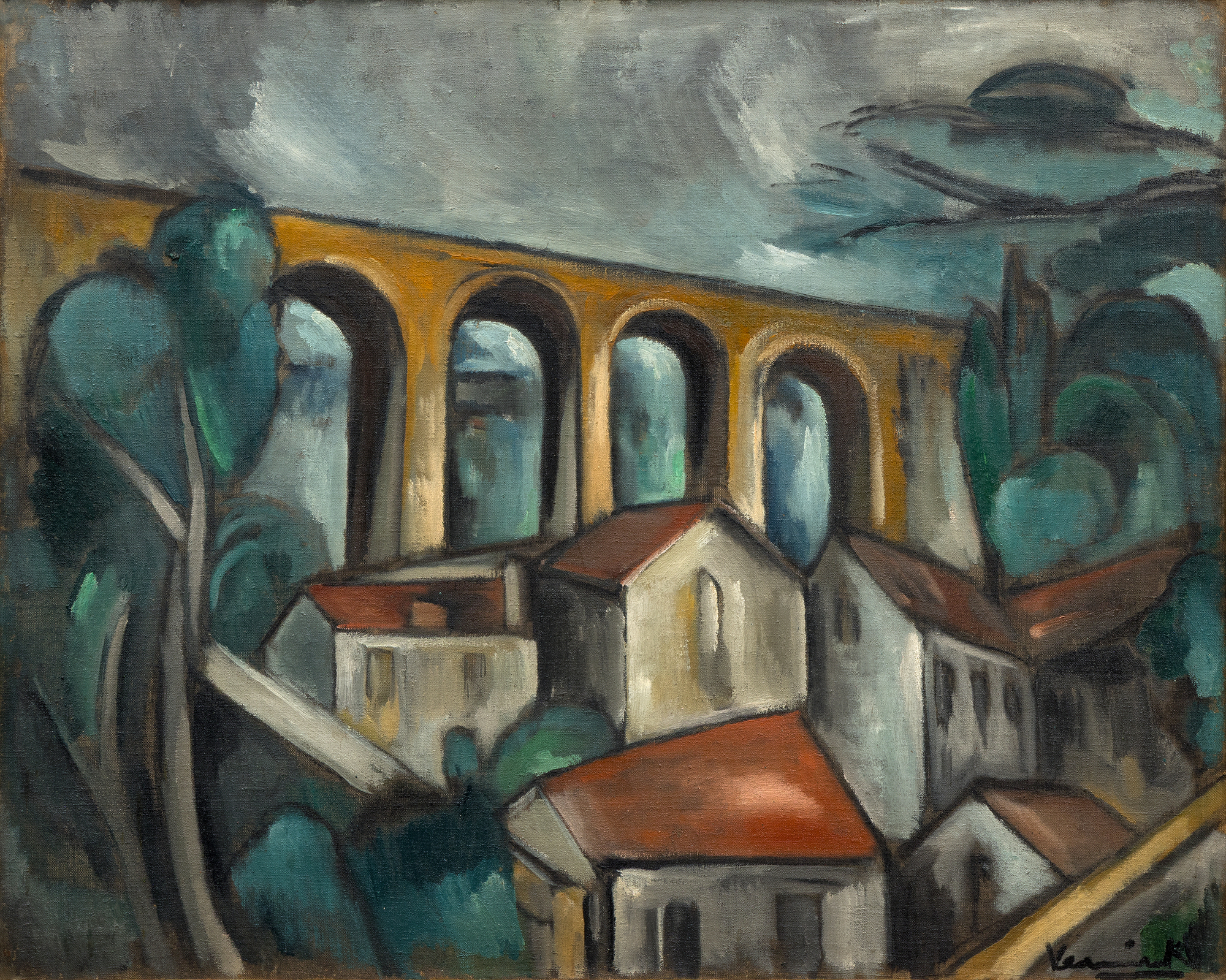
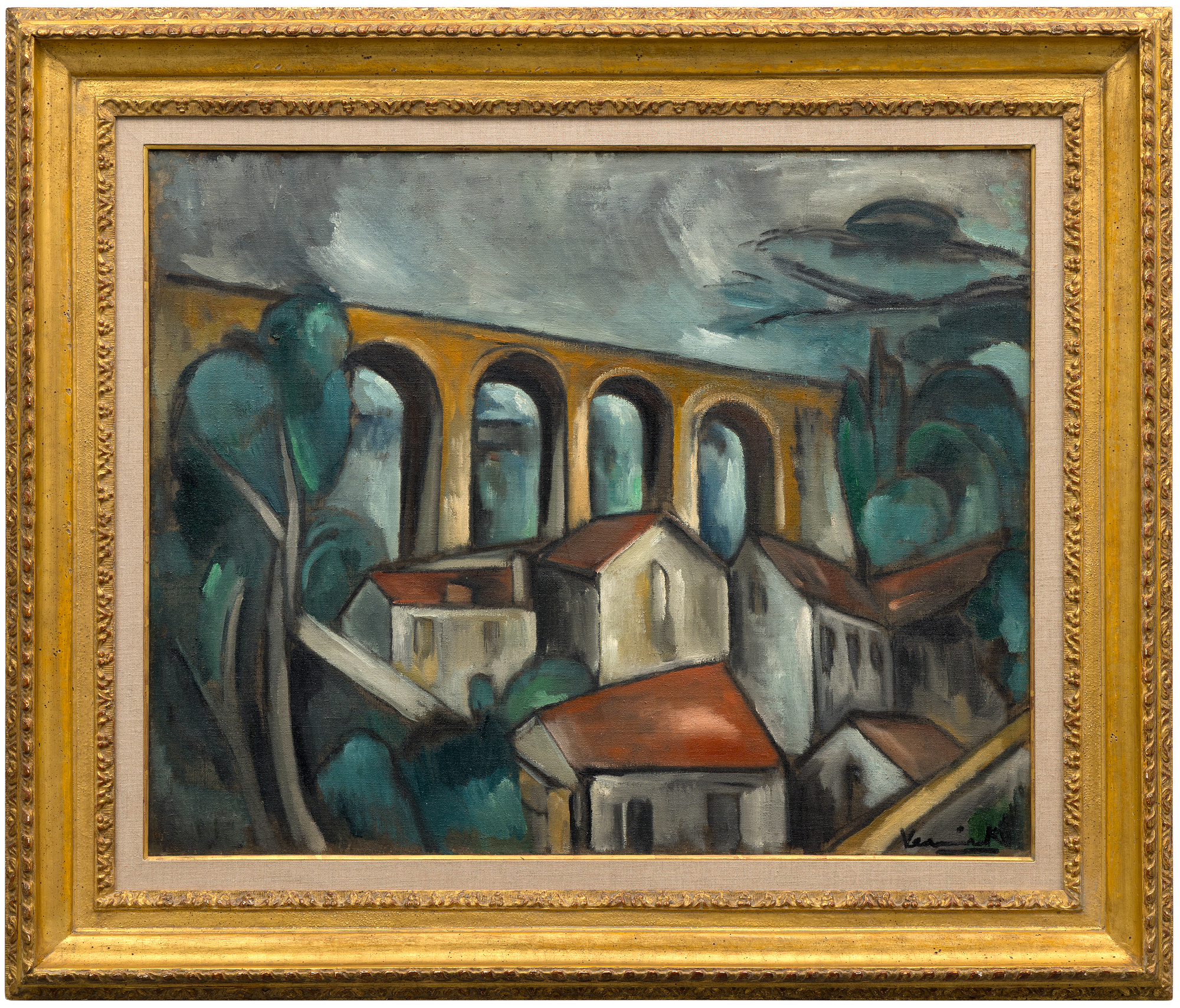
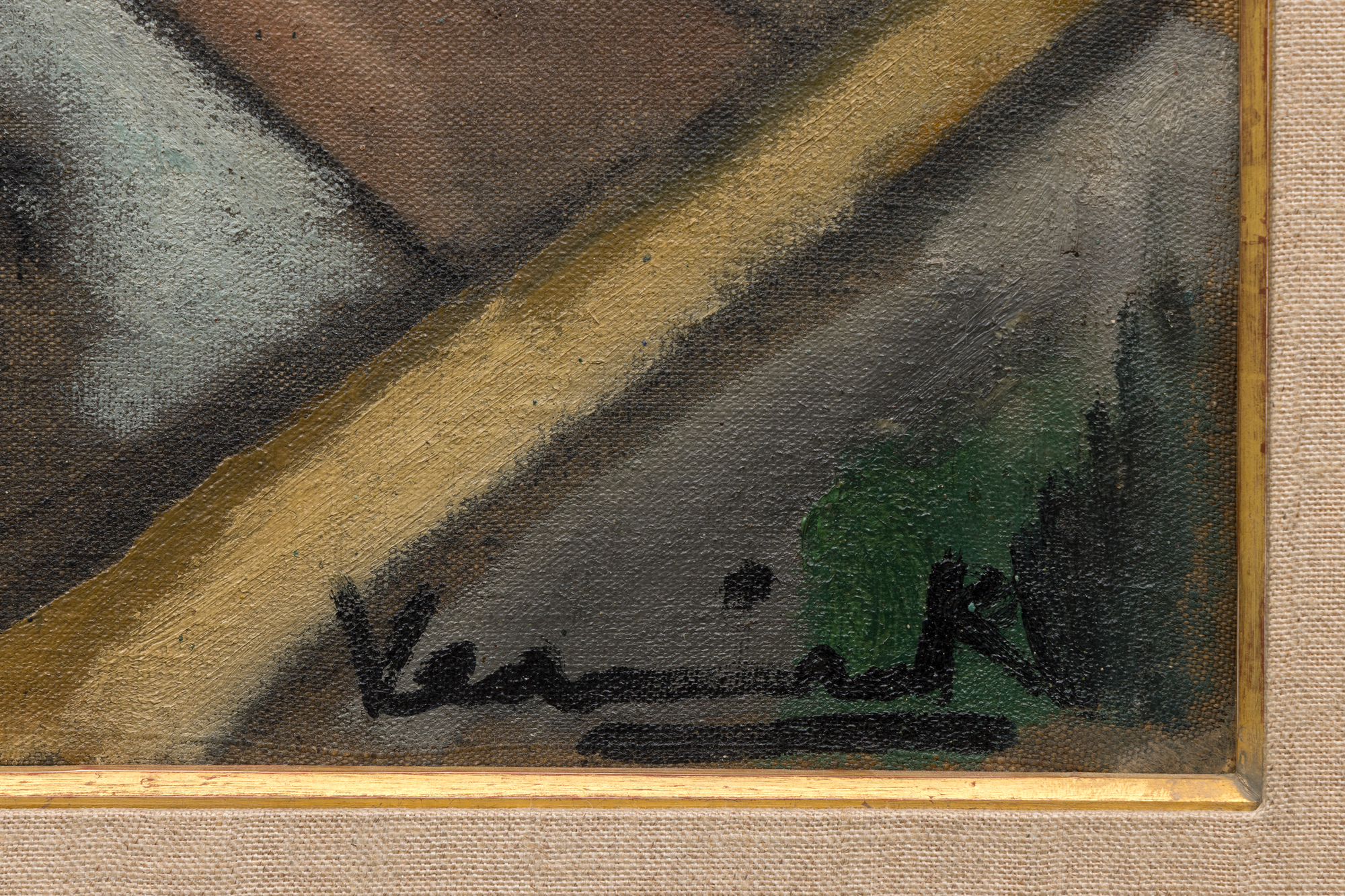
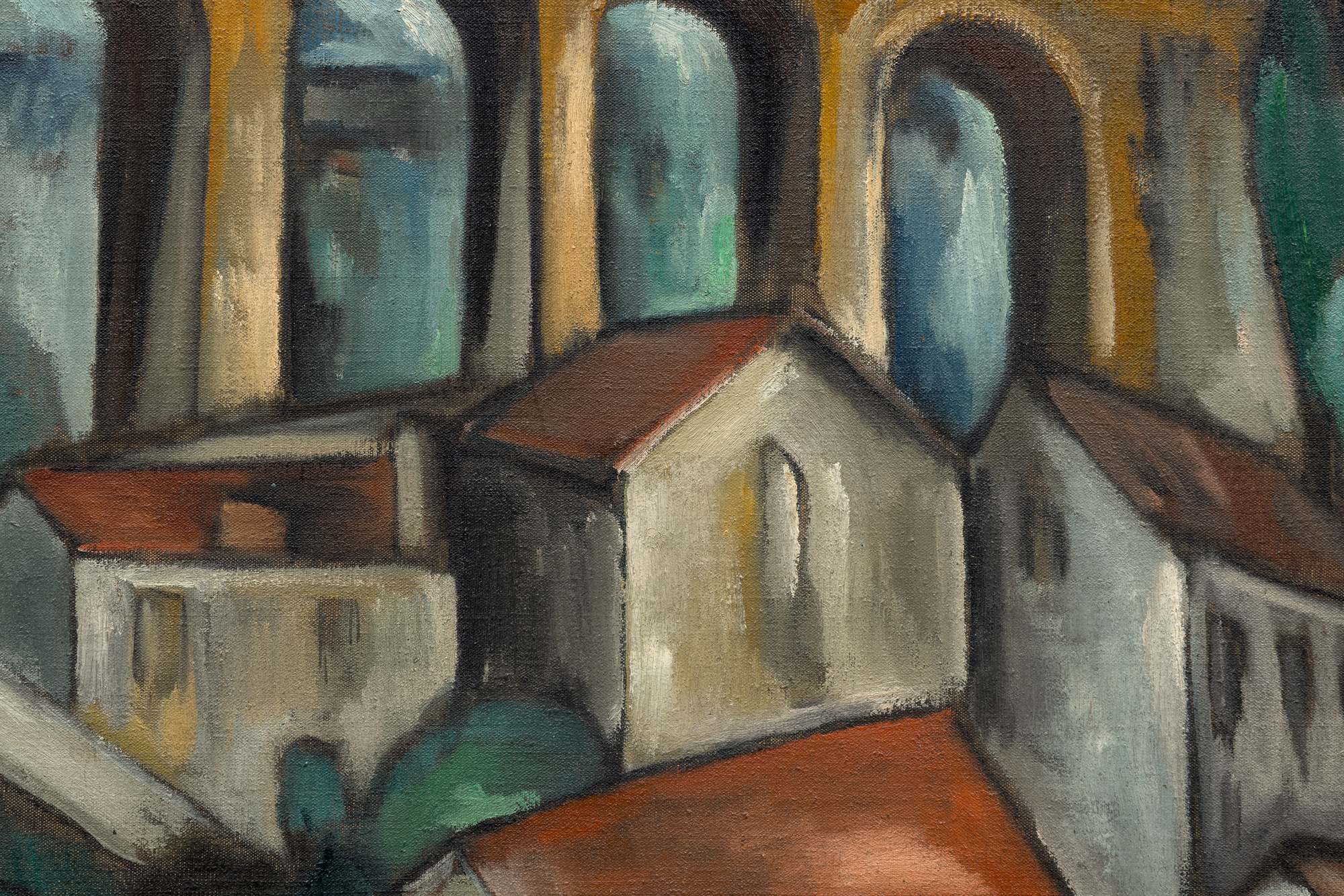
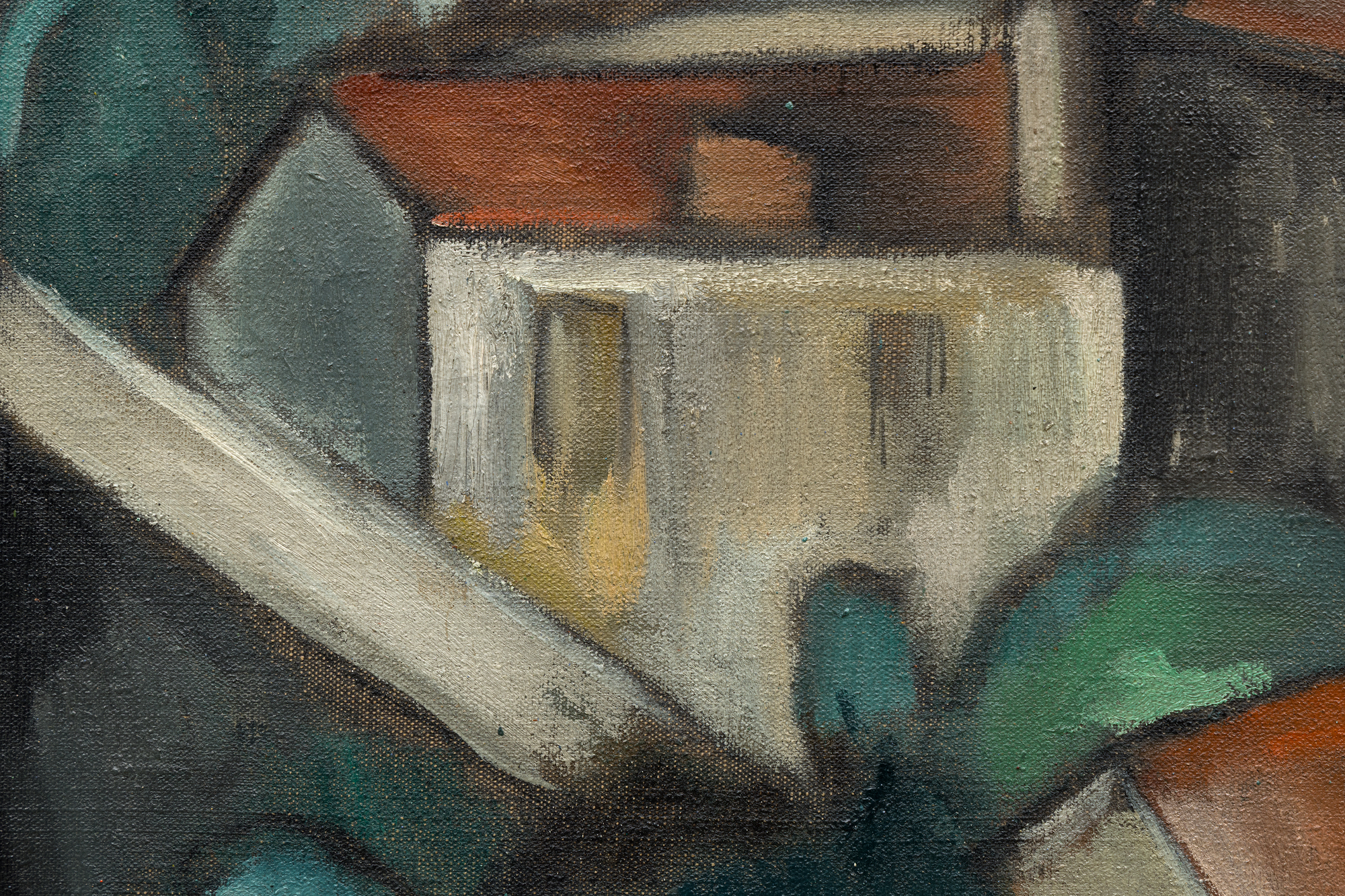

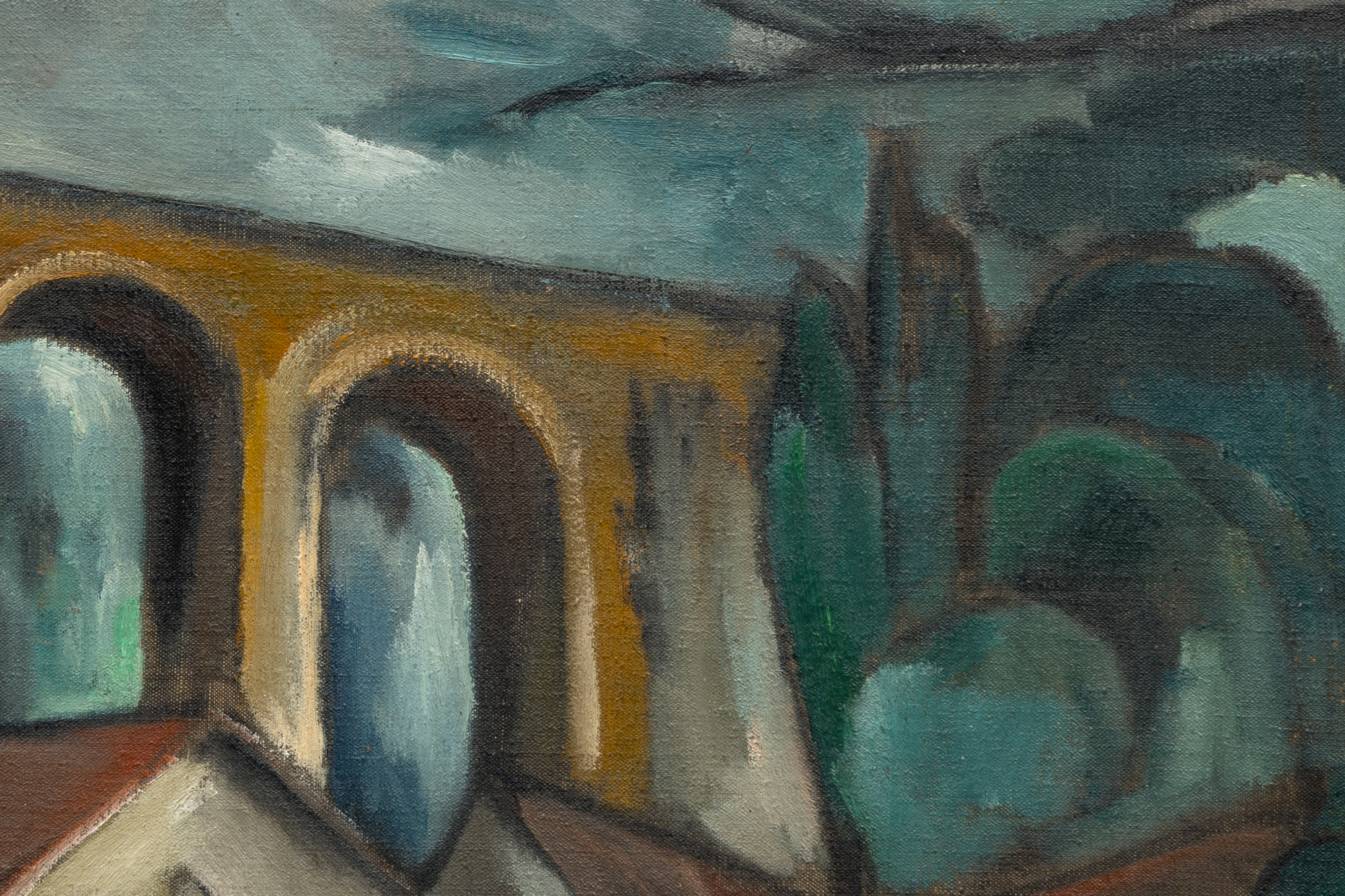
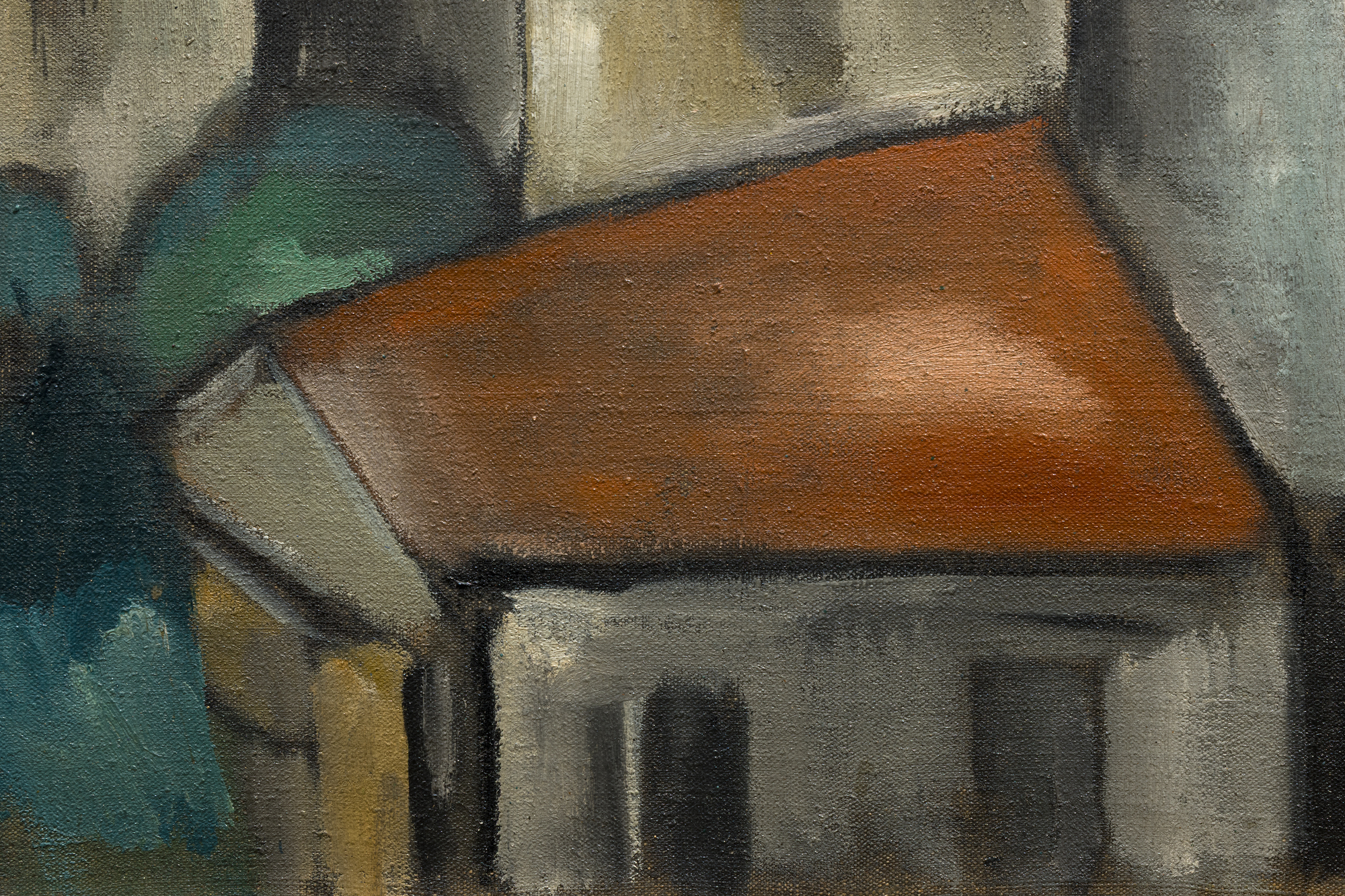
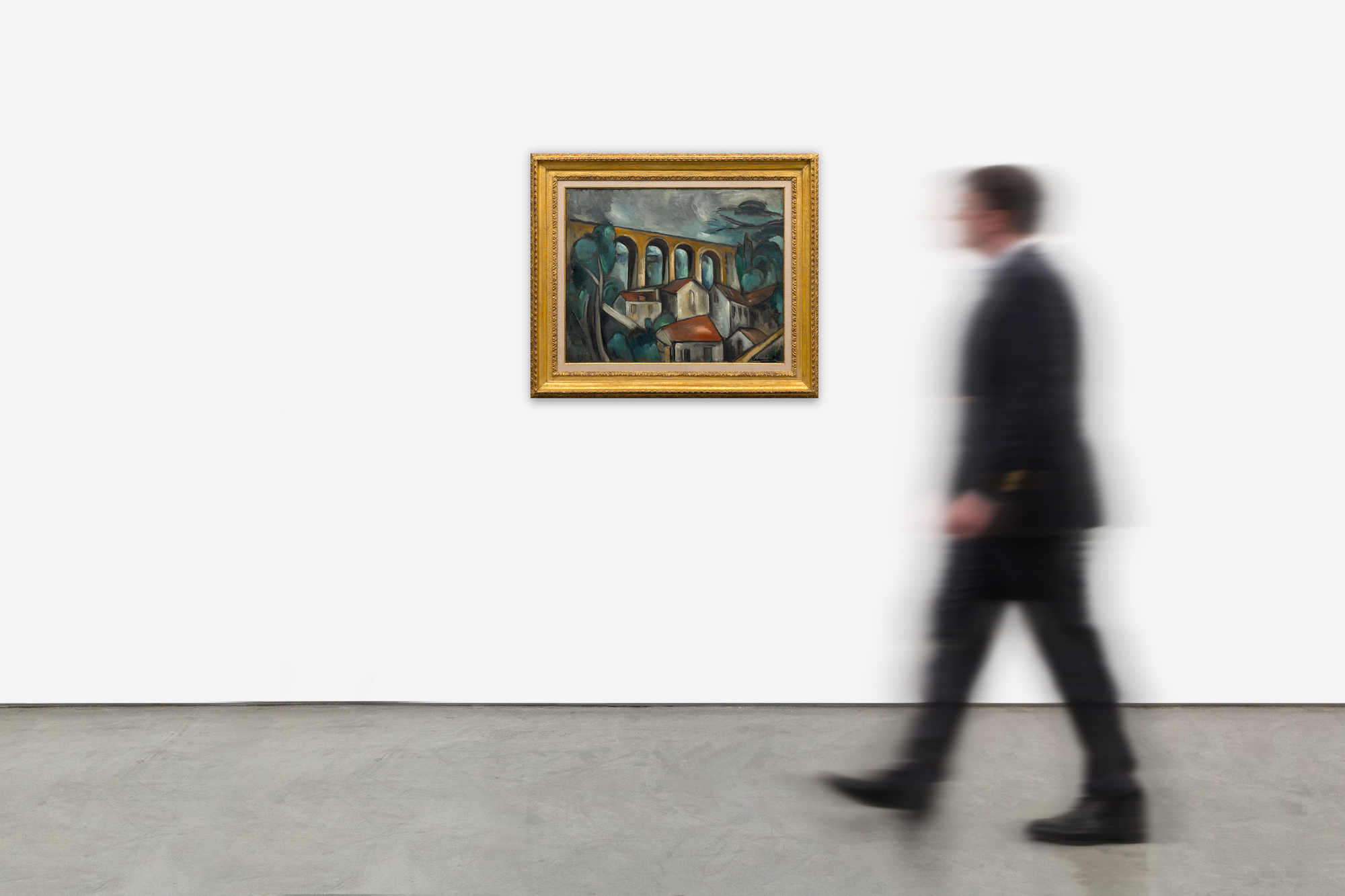

Provenance
Werner Ruscher, CologneParke-Bernet Galleries, Inc, New York, 17 avril 1969, lot 143
Galerie Marcel Bernheim, Paris
Perls Galleries, New York
Collection privée, acquise auprès de la personne susmentionnée, c. 1993
Exposition
Tokyo, Galerie Nichido et Osaka, Shin Daibiru, Vlaminck, octobre-novembre 1966, n° 10.Littérature
Galerie Nichido, Vlaminck, Tokyo, 1966, n° 10, illustré (daté 1918 et intitulé Viaduc)175,000
Les coups de pinceau audacieux de Vlaminck et sa palette sourde créent un effet texturé, presque sculptural, avec des arbres et des toits aux formes dynamiques et facettées. Le ciel couvert renforce l'intensité ambiante de la scène, tandis que les arches du viaduc dominent, symbolisant la modernité au milieu du charme rural. Cette œuvre illustre ses premières racines fauvistes évoluant vers des influences cubistes, mettant en évidence un style pionnier.
Résident de la région, Vlaminck a souvent dépeint l'évolution de son paysage, mêlant tradition et innovation. "Le Viaduc de Saint-Germain-en-Laye" offre aux collectionneurs un rare aperçu de cette période de transformation. Sa composition saisissante et son contexte historique en font un ajout convaincant à toute collection, célébrant la contribution de Vlaminck au développement de l'art moderne.


